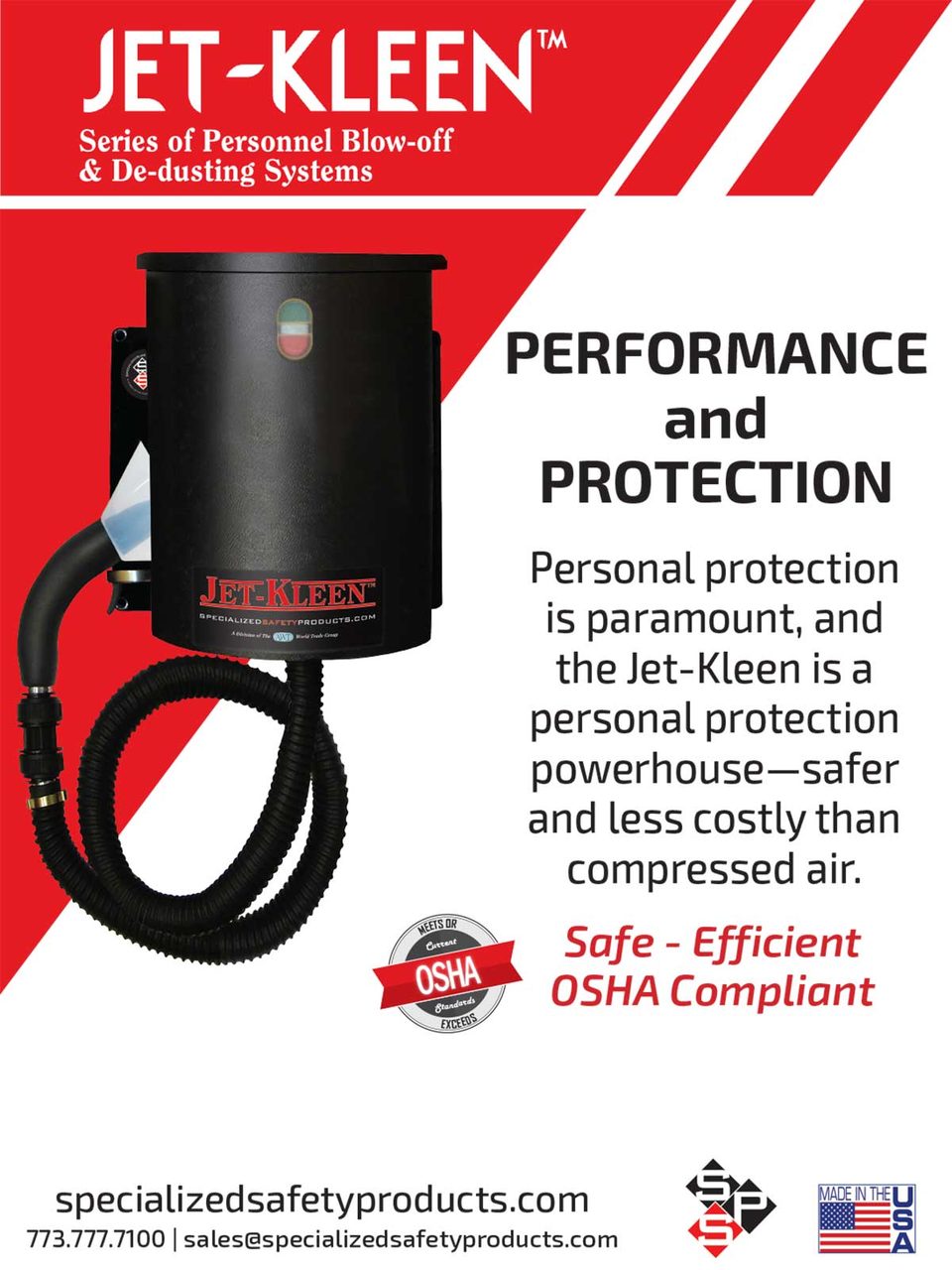Photo courtesy of Shawmut Corporation.
Video: gorodenkoff / Creatas Video+ / Getty Images Plus via Getty Images.
PPE

for
FIT
protection
N95 respirators must perfectly fit the wearer’s face for maximum safety
By Nancy Sabin, Q.S.S.P, Product Marketing Manager, Shawmut Corporation
n N95 mask is a filtering facepiece respirator (FFR) that meets the National Institute for Occupational Health & Safety (NIOSH) N95 classification for air filtration, removing particulates from the air that are breathed through it and capable of filtering out at least 95% of very small particulates and large drops including dusts, mists, fumes, bacteria, and viruses. However, an N95’s protection is only as good as its fit.
OSHA outlines a protocol, as well as general requirements for fit testing in Standard 1910.134 App. A. As part of the policy, employers are required to fit test employees which are required to wear an FFR to do their job. So, what is a fit test? And how can employers ensure they are properly following the protocols?
A
What is an N95 fit test, and why is it needed? A respiratory fit test is an annual requirement of (OSHA) to protect employees who must wear respiratory protection on the job from airborne hazards. A vital component of an N95 respirator is the head straps that go around a wearer’s head, rather than around their ears, to provide a secure fit on the user's face to achieve the minimum 95% filtration. However, every make and model of an N95 respirator is shaped differently and therefore does not fit an individual's facial structures the same way. If a mask does not fit properly, it cannot guarantee maximum protection.
The primary purpose of a fit test is to verify that an employer's selected make or model N95 respirator properly fits and protects the employees required to wear the FFR on the job. A fit test is not a general test, but a specific test administered for all brands and models of NIOSH-approved respirators to ensure that the wearer identifies the product that works best for them and their facial structure. If a worker changes their brand or model of N95 respirator, that worker will have to be re-fit tested with the new respirator. If a worker endures any significant changes such as weight loss, weight gain, or a procedure that alters their face shape in any way, they will also need to be re-fit tested to ensure a proper fit for their safety.
How do you conduct an N95 fit test?
Employers can conduct two types of fit tests to determine the proper fit of an N95 respirator: qualitative and quantitative.
Quantitative
A quantitative fit test uses machines to measure the amount of leakage an N95 mask produces when placed on a user’s face and then calculates the results. While an individual is wearing an N95 mask, the tester connects it to a machine by inserting tubes into the mask. The tester then asks the individual to do some basic exercises, such as speaking, singing, jogging in place, or touching their toes, allowing the machine to determine how many airborne particles can break through the mask’s seal while it is in motion.
Qualitative
A qualitative fit test determines the protection of an N95 respirator based on the user's senses. Instead of using a machine to measure leakage, the tester drapes a hood over an individual in a qualitative test to prevent any outside air from getting in. Then a unique solution is sprayed into the hood. These solutions usually contain a sweet or bitter compound that causes a reaction to the wearer if the mask’s seal is not strong enough.
By design, both quantitative and qualitative fit tests try to get the user to break the mask’s seal and let the contaminant pass the filtration medium. If this happens, then the user knows that the mask will not keep them safe on the job. If the mask seal does not break during the fit test, then the respirator passes, and the employee should be confident the N95 respirator they wear will protect them on the job if it is worn properly.
An N95 Is only as good as it fits
Fit testing may seem like a nuisance to some, and because it can be expensive to administer, companies might even skip testing altogether. But if your N95 respirator doesn’t fit properly, it will not protect you or do the job it is intended to do. If that’s the case, why even bother wearing one? Fit testing is not just an OSHA requirement for safer workplaces; it's a matter of an employee's livelihood. If you or your employees need to wear a mask on the job to protect from dust, harmful chemicals, fumes, or gasses, you better make sure that the mask works. And the only way to do that is with a fit test.
Nancy Sabin, Q.S.S.P, is Product Marketing Manager at Shawmut Corporation.

